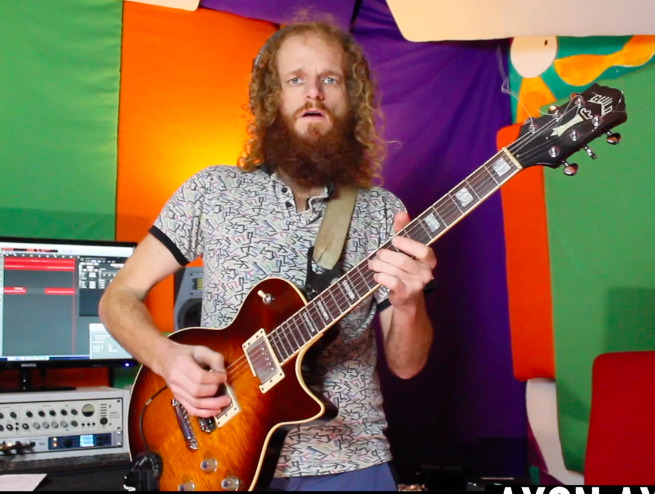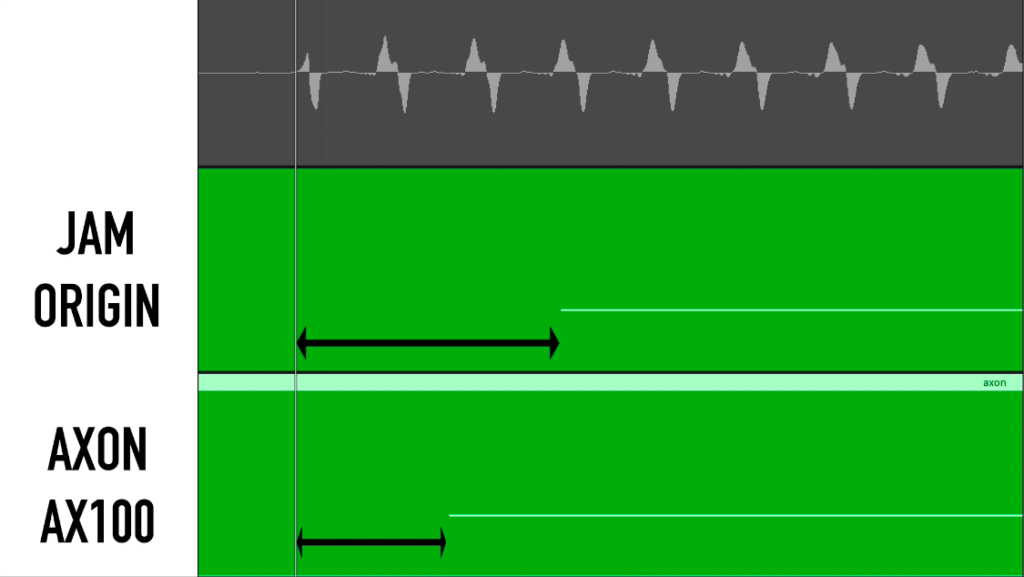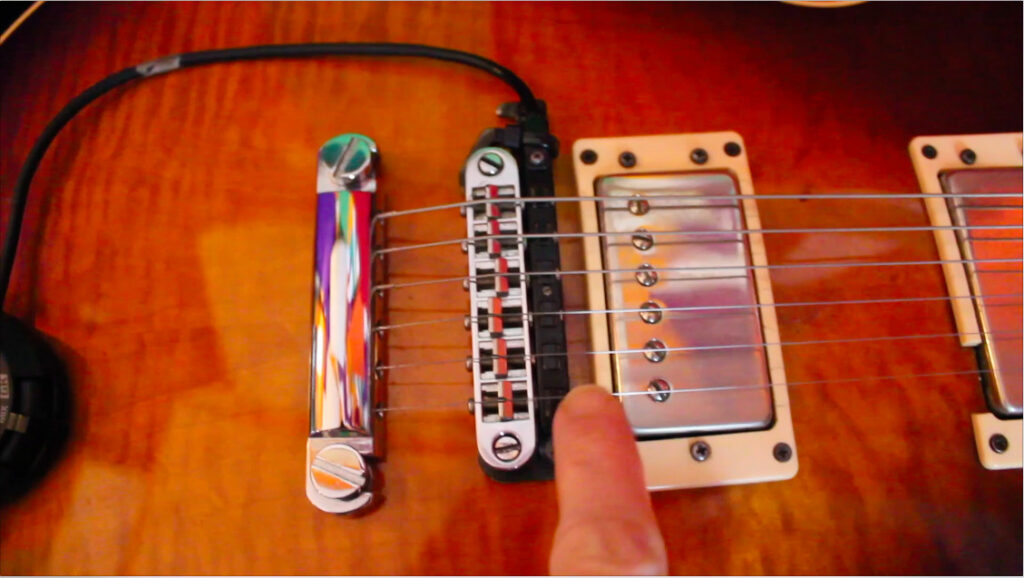MIDI guitar plugin vs hardware
5th February 2021
A comparison between the Jam Origin plugin MIDI Guitar 2 plugin and the Axon Ax 100 hardware unit.
MIDI guitar is great, I’ve been gigging my trusty Axon Ax 100 MIDI guitar unit for about 18 years and I absolutely love it. It’s fantastic in the recording studio too. Briefly, for anyone not initiated a MIDI guitar is a means of guitar playing being converted into a digital MIDI signal. From there you can plug into synthesisers, samplers etc. and play their sounds.
If you’re new to MIDI I’d suggest looking into it because it’s amazing! In a nutshell, it’s a set of messages to ‘tell’ a sound making device what and how to play (Check out Pat Metheney’s ‘Orchestrion‘ for a demonstration of this. from the master.) This is different from an audio signal which actually ‘is’ the sound. Are you with me?
MIDI Guitar 2 by Jam Origin
I recently heard about a new plugin called ‘MIDI guitar 2’ by Jam Origin. It boasts AI technology to convert your guitar into a MIDI signal (guitar to MIDI). Here’s what the two contenders look like:


The best bit here is that you don’t need any hardware. The Axon and most MIDI guitar setups use a separate pickup on the guitar body plus a hardware unit. The pickup is analogue and actually has a separate pickup for each string. This gets sent to the ‘brain’ where each string is processed individually and sent as a MIDI signal.
It’s hard to believe but the MIDI guitar 2 plugin just needs your normal guitar output. The algorithm detects the notes which apparently works for chords too! It’s fantastic news for guitarists, giving affordable access to a host of bleepy-bloopy synth tones, 808 samples and well…..anything.
The Comparison
I tried a few different playing styles because the MIDI guitar varies in response according to how you attack the instrument. In the demo there is chord picking, monophonic playing (yeah, OK I mean solos), chord ringing and strumming. I also tested the latency and response to slides (glissando) or bends (bendando).

Obviously if you check out the video, you will get to hear how the two respond and receive my no holds barred, off the cuff, live and unedited reaction to using them. Below is a more considered appraisal of the responses.
Chord Picking
I tried an open string arpeggio progression. The Axon performed fine with no issues but the Jam Origin plugin was terrible! For some reason it seemed to be getting confused with a major 7th interval and kept trying to move the bottom note so that it was an octave below the top note. I have no idea why it would do this and get away with it. After adjusting sensitivity and guitar input levels to no avail and re-trying this pattern on different days I chalked this one up as a win for the hardware. Hardware 1 – 0 Software.
Guitar Solos
Brilliant, the best bit lets be honest. So the plugin is great here, works really well. It is super sensitive to the touch. Hammer-ons and pull-offs get tracked flawlessly. The Axon is decent, it doesn’t make too many mistakes but it just can’t reliably track hammer ons or pull offs because it relies on the picking of the notes. On the other hand with the plugin I am getting a lot more errors when I play certain types of guitar. If my thumb brushes the strings lightly I get a note triggering. It seems that the sensitivity is a 2 edged sword and there doesn’t seem to be enough adjustment in there to calibrate it to your playing style. Hmmm I’d say a score draw on this making it Axon 2 – 1 Jam Origin.
Chord Ringing (pads)
Both instruments coped well with the actual tracking here, highly impressive from the plugin as it only has the audio stream to work with. The plugin did want to keep re-triggering every time I removed my hands though. This is after many adjustments in the software and interface input. For this, the plugin was unusable. Axon 3 – 1 Jam Origin
MIDI Strumming?
MIDI guitar is terrible at this. As soon as you go past the point of arpeggio and into scratchy guitar land you’re in big trouble. You are greeted with random high pitched notes and a clattering of chord attacks. This is a no score draw for sure. Well, you can’t have everything can you?
Bends and slides
Wahey! Both track really well on bends. On slides though the Jam Origin is a clear winner. Again, it’s sensitivity and reliance on the audio output rather than the pick transient gives it an advantage. Axon 3 – 2 Jam Origin.
A note on bends: on both units you have to configure what you want it to do when you bend. Either a 2 step maximum bend (which would be normal for the guitar) all the way up to 12 steps! That is a lot of fun I can tell you. You can also turn bends off – useful for a piano sound, drum kit and the like.
Guitar to MIDI Latency
Latency is the time taken to convert to MIDI. Essentially the gap between hitting the note and hearing the sound from your synth or sampler. This is easy to measure by recording guitar and MIDI into the DAW and measuring the gap between each. During the demo I thought that the plugin was faster but was surprised to find the Axon was noticeably quicker:

I guess the higher sensitivity of the plugin made it feel faster. We should note here though that both have very low latency so are completely playable, it doesn’t get in the way at all.
Conclusion
Overall, I think the hardware is better because particularly for gigs, the Axon Ax 100 is more reliable across the board. It’s still leagues ahead for chord response too because of those individual pickups for each string, they really give it the edge for chords.

This is not to say the Jam Origin MIDI guitar 2 plugin isn’t an amazing tool, I have no doubt that future versions will eclipse the hardware units forever. The tracking is incredible and I just think needs a bit more of an a calibration option. Try it anyway, it’s free!
